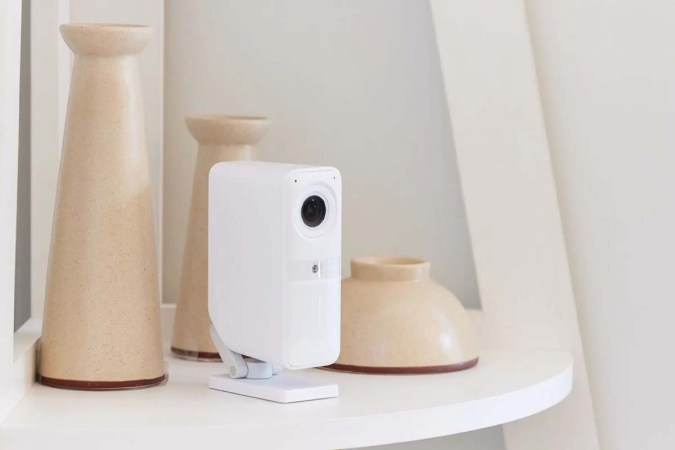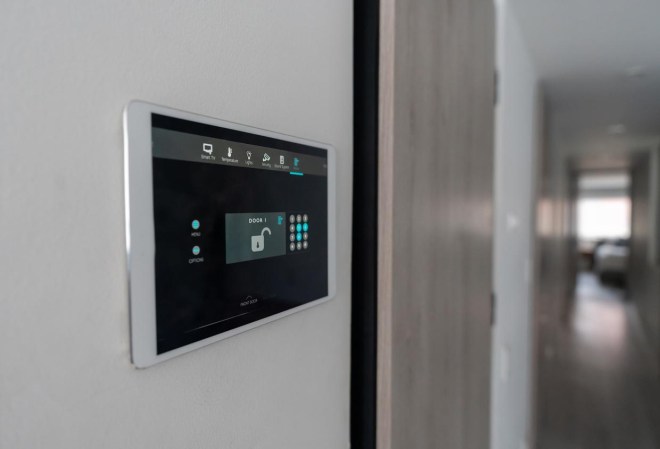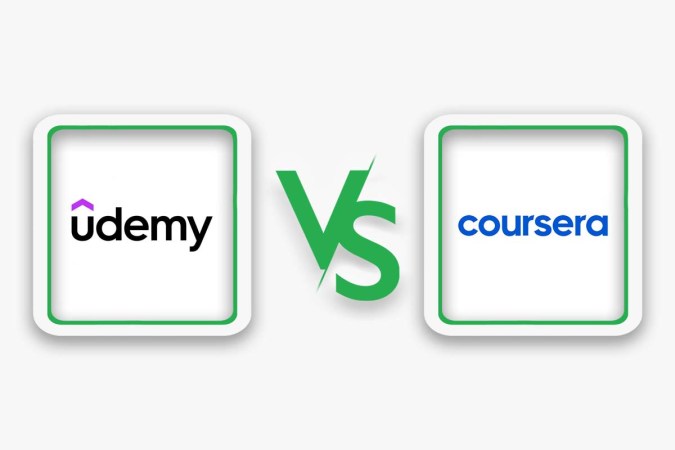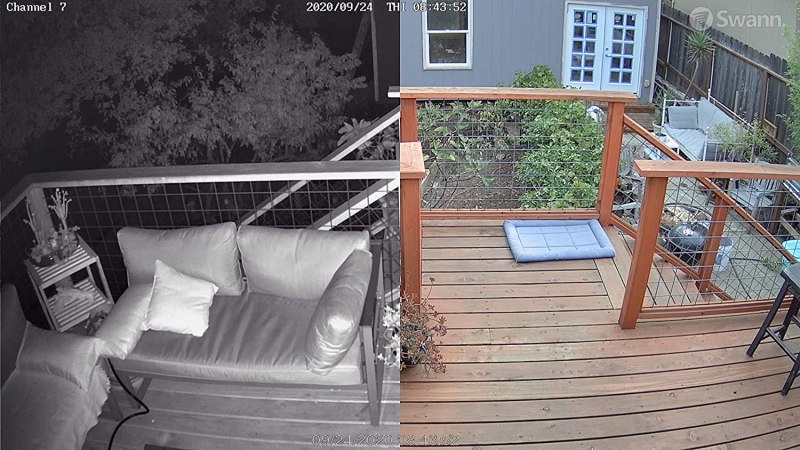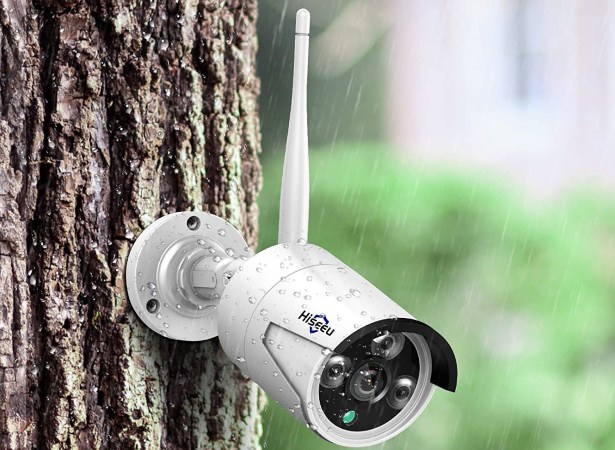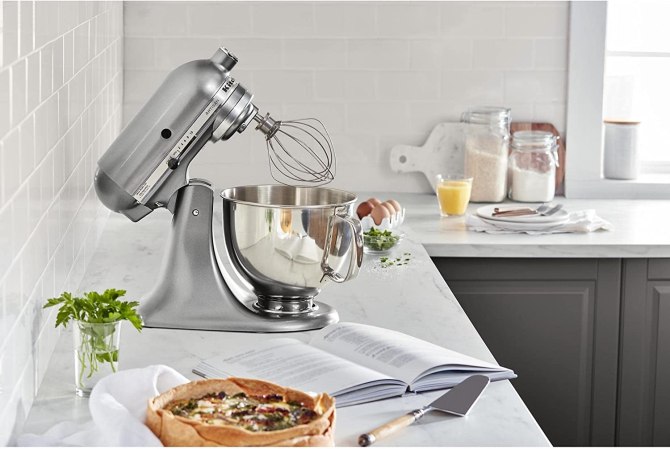We may earn revenue from the products available on this page and participate in affiliate programs. Learn More ›
Both SimpliSafe and Vivint feature among the best home security systems in the industry. Choosing between Vivint vs. SimpliSafe can be tough, especially since both systems are well worth the investment. This comparison guide breaks down the two companies on a point-by-point basis, comparing each individual aspect to help readers decide which of the two home security systems would best fit their needs.
Editor’s Note: Prices listed in this article are accurate as of the last update, but may vary. For the most up-to-date costs, please see SimpliSafe’s or Vivint’s website.
How We Compared Home Security Systems

Although security systems differ from company to company, there are a few traits that remain the same across the board. Comparing two companies’ reputations, equipment and monitoring options, pricing, and more can allow customers to fairly evaluate which of the two options is objectively better for them.
- Reputation: A company’s reputation is the easiest measuring stick. Outlets like the Better Business Bureau and Trustpilot allow consumers to express their opinions, and those takes on a company say a lot about the user experience.
- Equipment options and quality: Different companies offer different types of equipment. Some are more compatible with third-party devices than others. All these factors play a role in determining the versatility and overall user-friendliness of a company.
- Packages and plans: Are features locked behind a specific plan, or is everything available to customers from the outset? How many plans are available, and what sort of versatility do they offer?
- Pricing and fees: Not everyone has the same budget. When a company offers a variety of pricing options, as well as customization regarding what features are required, customers can build a security system that suits their specific needs.
- Installation: While many home security companies offer professional installation, the costs of this installation are often high. Optional DIY installation helps customers cut down on security camera installation costs and gives customers more options.
- Monitoring: Professional monitoring is one of the features that sets a high-end system apart from a singular security camera, but not all monitoring plans are created equal. What features are included with monitoring, as well as the cost of that monitoring, can be the deciding factor between two different systems.
- App user experience: Any home security app should be intuitive, easy to install, and fast to load. The last thing someone wants when unexpected motion is detected is to spend 10 or 15 seconds waiting for the app to open.
- Contracts and trial period: Although a security system might look great on paper, the day-to-day experience can often be quite different. A trial period gives users time to decide whether the system actually works for them or not.
- Warranty: Just as a trial period allows a user to test out a system, a proper warranty protects against manufacturing defects or accidents at installation.
- Home automation and device compatibility: In the modern world, a home security system should provide as much convenience as it does safety. Many home automation features can enhance the efficacy of a security system.
1. SimpliSafe vs. Vivint: Reputation and Customer Reviews
SimpliSafe is fairly well known for its easy-to-install home security system with the option to choose from self-monitoring and professional monitoring, making it one of the best apartment security systems. As the home security industry moves away from the more traditional security systems, more renters and homeowners are choosing DIY systems such as SimpliSafe for their relatively low costs and reliable equipment. SimpliSafe reviews generally speak to this reputation; the company’s Trustpilot rating sits at 3.7 out of 5 after more than 16,400 reviews, while on Consumer Affairs it averages 2.1 out of 5 with just over 400 reviews.
Vivint is also well known, though it’s on the other end of the spectrum from SimpliSafe with its professional installation and monitoring requirements. Vivint home security equipment is known for being reliable, and its monitoring plans are designed to fit a variety of customers’ needs. Similarly to SimpliSafe, Vivint reviews are also generally positive; Trustpilot shows an average of 3.4 out of 5 after just under 31,800 reviews at the time of writing, while Consumer Affairs reviewers rate Vivint at 4.7 out of 5 with just under 3,600 ratings. Vivint also seeks out reviews, replies to negative reviews quickly and with helpful feedback, and moves to correct problems that customers face—this is generally a good sign that the company is willing to work with unhappy customers to fix any issues they’ve experienced with their Vivint security system.
Verdict: SimpliSafe and Vivint both have excellent reputations as two options among the best home security systems on the market. Customer reviews reflect that these good reputations are well earned, with an abundance of positive customer reviews for both companies. However, a closer look reveals that Vivint’s overall rating is slightly higher.
Winner: Vivint
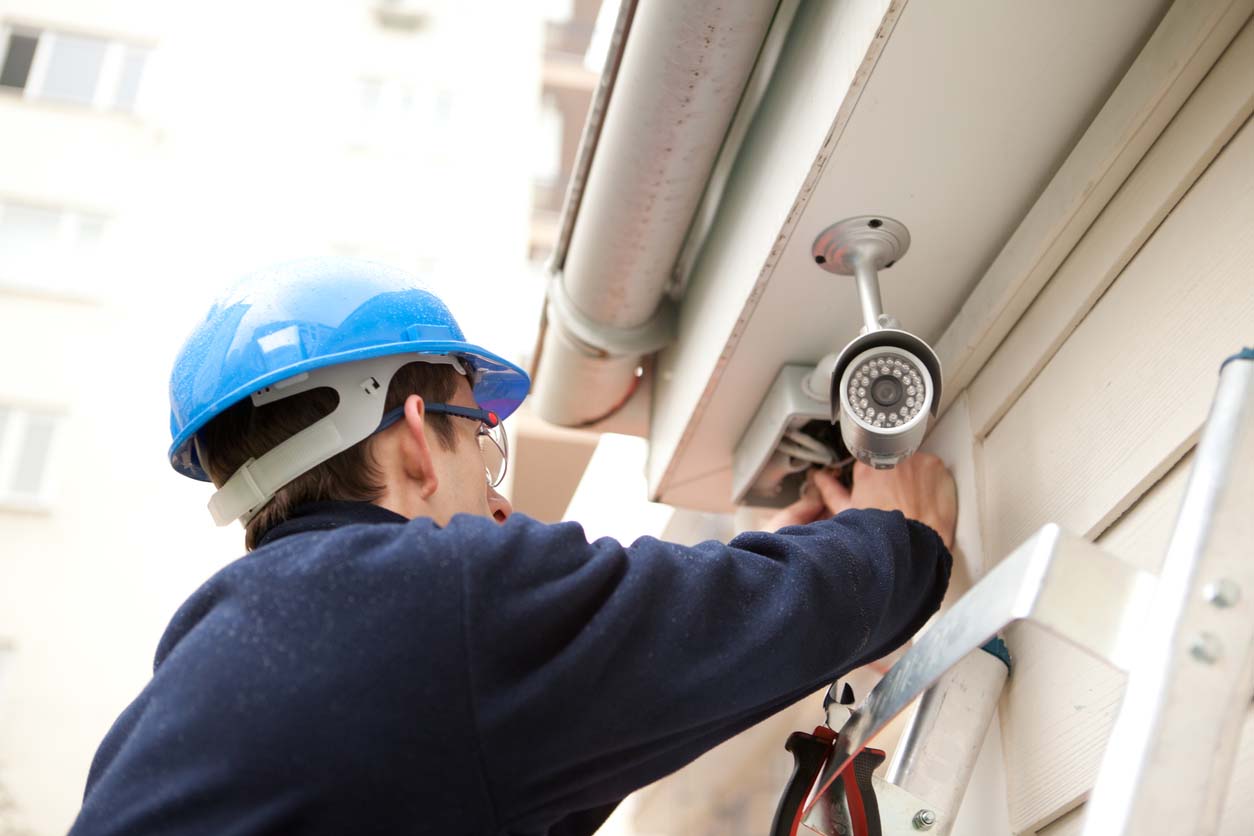
2. SimpliSafe vs. Vivint: Equipment Options and Quality
SimpliSafe offers multiple security equipment options, including indoor and outdoor SimpliSafe cameras, motion sensors, glass-break sensors, and a panic button. Additionally, the company offers hazard sensors such as a smoke detector, temperature detector, and water sensor. There is even optional equipment including a 105-decibel siren (which is about the same volume as a nightclub) and key fobs. The only type of equipment missing from SimpliSafe’s lineup is smart-home equipment (with the exception of the SimpliSafe smart lock), which may be a deal breaker for some customers.
Vivint offers much of the same type of equipment, including a Vivint key fob and Vivint motion detector, but takes it a step further with in-house smart-home devices like the Vivint Smart Hub, easy integration with Nest thermostats, and smart alarm sensors for windows and doors. Additionally, Vivint has an optional add-on called Car Guard that syncs with the Vivint system to track a vehicle’s location, send disturbance alerts, and diagnose mechanical issues. It also offers combined smoke and carbon monoxide detectors as well as other useful pieces of equipment that SimpliSafe just doesn’t bring to the table.
Verdict: Both SimpliSafe and Vivint have a long list of high-quality equipment options, but Vivint offers additional components, such as vehicle protection, combined smoke/carbon monoxide detectors, and various smart-home systems.
Winner: Vivint
3. SimpliSafe vs. Vivint: Packages and Plans
SimpliSafe not only allows customers to create a custom package with just a couple of starting elements, but it also offers seven premade packages: the Foundation, the Essentials, the Hearth, the Knox, the Haven, the Lighthouse, and the Beacon. Each package varies in price and equipment options, but the wide selection gives customers a range of items to choose from. The following is a breakdown of each of the SimpliSafe plans and the included equipment.
- The Foundation comes with a base station, keypad, one entry sensor, one motion sensor, and a free indoor camera.
- The Essentials includes the same equipment as The Foundation but with three entry sensors rather than one.
- The Hearth mirrors The Essentials but adds a wireless siren and a smoke detector.
- The Knox includes the same equipment as The Hearth, but it comes with six entry sensors and two motion detectors as well.
- The Haven comes with the base station and keypad, four entry sensors, two motion sensors, a panic button, a temperature sensor, a water sensor, a smoke detector, a key fob, a wireless siren, and an indoor camera.
- The Lighthouse includes the base station and keypad, one motion sensor, three entry sensors, a wireless outdoor camera, and a free indoor camera.
- The Beacon is a step up from The Lighthouse, increasing the number of motion sensors to two, the number of entry sensors to four, and the number of outdoor cameras to two.
Vivint offers two packages: the Premium Package and the Premium Plus Package. Vivint also lets customers build their own package, but it’s not as easy to do and requires a phone call to a customer representative. What follows is a breakdown of Vivint’s packages and the equipment included in each.
- The Premium Package includes a Vivint Smart Hub Control Panel, a flood/water damage sensor, four entry sensors, a doorbell camera, an outdoor camera, a smart lock, and a key fob.
- The Premium Plus Package includes all the equipment in the Premium Package and adds an indoor camera, an extra outdoor camera, a smart thermostat, and a smart garage door controller.
Verdict: Both companies offer fully customizable packages to allow customers to tailor their system to their specific requirements. However, while Vivint offers two preset equipment packages, SimpliSafe offers seven, giving customers more options.
Winner: SimpliSafe
4. SimpliSafe vs. Vivint: Pricing and Fees
Home security costs can vary drastically between companies. SimpliSafe isn’t exactly cheap; the most advanced package is almost $700, but the company frequently offers discounts on equipment in addition to a free month of service for those who choose professional monitoring. The following is the pricing for SimpliSafe’s seven packages.
| Equipment Package | Cost |
| The Foundation | $249.96 |
| The Essentials | $279.95 |
| The Hearth | $399.91 |
| The Knox | $479.87 |
| The Haven | $519.86 |
| The Lighthouse | $469.93 |
| The Beacon | $709.90 |
SimpliSafe’s three monitoring plans give customers a choice between self- and professional monitoring. The pricing for these plans is as follows:
| Monitoring Plan | Cost Range | Approximate Cost Per Month |
| Self Monitoring with Camera Recordings | $0.33 | $10 |
| Standard Monitoring | $0.66 | $20 |
| Fast Protect Professional Monitoring | $0.99 | $30 |
Vivint’s equipment packages are much higher in cost, though the company encourages customers to take out a contract and pay monthly. It’s not required, though; customers who have enough money to pay for the equipment outright can certainly do so, and as an added benefit they won’t be locked into a contract. Below is Vivint’s pricing for its equipment packages, both by the month (for a 5-year contract) and in total.
| Equipment Package | Cost Range | Total Cost |
| Premium Package | $25 | $1,479.96 |
| Premium Plus Package | $40 | $2,379.92 |
Like its equipment, the cost of Vivint’s monitoring plans is on the higher end. Vivint doesn’t offer a self-monitoring plan, so customers will need to choose the professional monitoring plan that best suits their needs. The plans and their starting prices are as follows:
| Monitoring Plan | Starting Cost Per Month |
| Smart Security Monitoring | $29.99 |
| Smart Home Monitoring | $39.99 |
| Smart Home Video Monitoring | $49.99 |
Verdict: Both Vivint and SimpliSafe have a variety of pricing options to suit a range of customers, but SimpliSafe’s overall cost is lower than Vivint’s—especially for customers who choose the less-costly options of DIY installation and self-monitoring.
Winner: SimpliSafe
5. SimpliSafe vs. Vivint: Installation
While some customers want to leave the installation of their security system to a professional, others who are particularly tech-savvy might prefer to install it on their own—especially if they know how to install security cameras correctly. SimpliSafe makes this possible, offering a choice between professional installation and a DIY security system. Customers who choose the DIY installation route can follow the instructions on SimpliSafe’s website, which will walk them through the entire process step-by-step through its website for how to install a system. Customers have the option of reaching out to SimpliSafe support if they need assistance—help is available by phone or by online chat through the SimpliSafe support website. Customers can also decide to go the professional installation route; SimpliSafe’s professional installation fees start at $79.
Unlike SimpliSafe, Vivint doesn’t offer a DIY installation option. Instead, Vivint cameras and other equipment must be installed by a professional. Since professional installers know exactly where to place security cameras for the best view, professional installation reduces the chance for error and maximizes the camera’s coverage area; however, it also increases the startup cost for these systems. The installation fee starts at $99, but the exact fee will depend on the monitoring plan the customer chooses. This is in addition to the cost of equipment, which means the up-front costs for Vivint can be quite high, especially when compared to SimpliSafe.
Verdict: SimpliSafe offers a choice between DIY and professional installation to appeal to a variety of customers, while Vivint does not offer a DIY option.
Winner: SimpliSafe
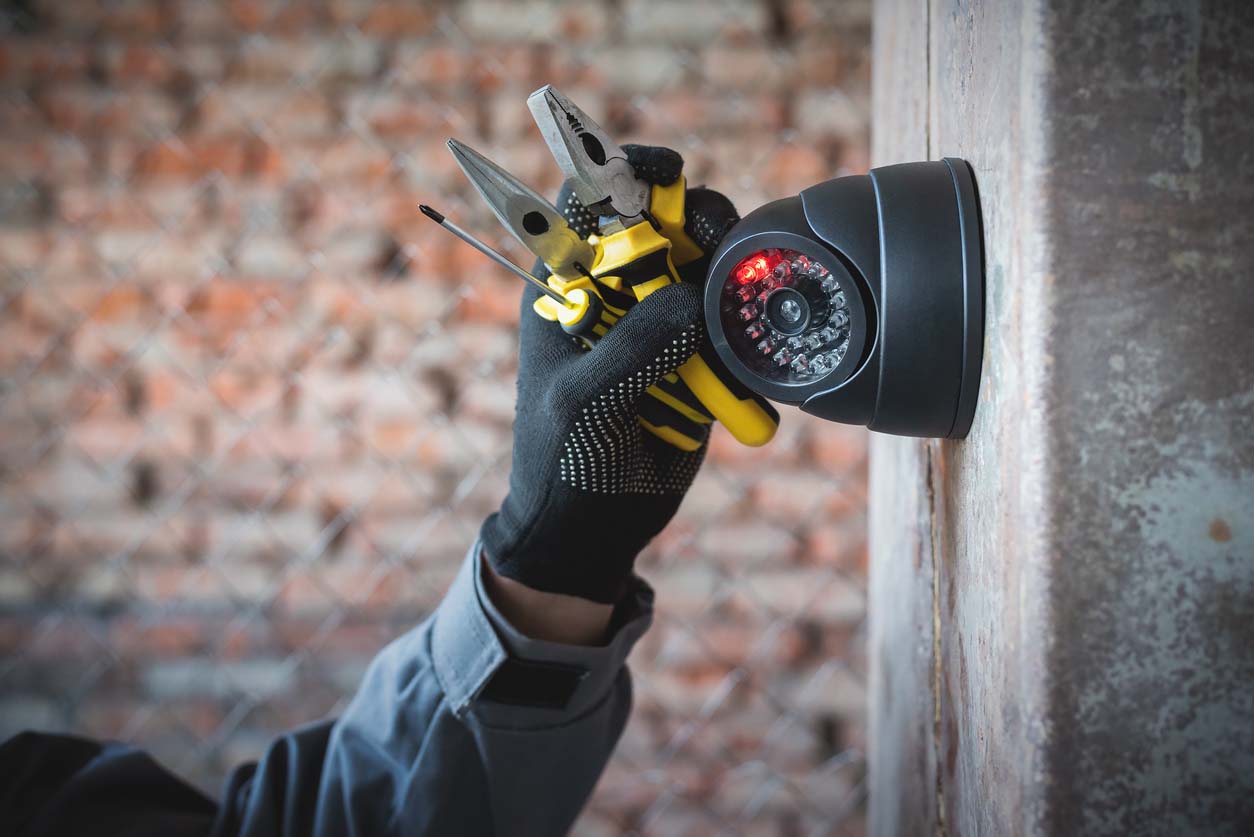
6. SimpliSafe vs. Vivint: Monitoring
Although many customers prefer the peace of mind that professional monitoring can bring to their home, there are times it isn’t necessary and the customer may want to save money and choose self-monitoring instead. SimpliSafe provides customers with a choice between three plans—two professionally monitored and one self-monitored—ranging in price from $0.33 to $0.99 per day. The three monitoring plans are:
- Self Monitoring with Camera Recordings: Includes HD live view on all cameras, unlimited camera recordings for up to five cameras, and an extended warranty up to 1 year.
- Standard Monitoring: Includes 24/7 police, fire, and ambulance dispatch; HD live view on all cameras; and an extended warranty up to 1 year.
- Fast Protect Professional Monitoring: Includes everything in the Standard Monitoring plan as well as unlimited camera recordings for up to 10 cameras, alarm confirmation or cancellation via text message, video alarm verification, a built-in cellular connection, water damage and temperature monitoring, the potential for home insurance discounts, and an extended warranty for the lifetime of the subscription.
Vivint also offers three monitoring plans, but unlike SimpliSafe there is no self-monitoring option. The professional Vivint monitoring plans range in price from $29.99 to $49.99 per month and can exceed that depending on the number of cameras installed in the home. Information about the three monitoring plans is as follows:
- Smart Security Monitoring: Includes mobile access; entry, smoke, and carbon monoxide detection; medical pendant support; and 24/7 professional monitoring.
- Smart Home Monitoring: Includes everything in the Smart Security plan as well as smart-home integration.
- Smart Home Video Monitoring: Includes everything in the Smart Home plan as well as video surveillance.
Although the cost of the Vivint monitoring plans is slightly higher than that of SimpliSafe, there are more features to choose from, including smart-home integration, which could make it a better fit for some customers. Others will find everything they need in SimpliSafe’s options.
Verdict: Vivint offers three professional monitoring plans designed to meet the needs and budgets of a wide variety of customers. SimpliSafe has three professional monitoring plans, but it also offers a self-monitoring option to cater to customers who don’t want professional monitoring.
Winner: Tie
7. SimpliSafe vs. Vivint: App User Experience
When it comes to apps for smart security systems, many companies offer virtually the same experience. The SimpliSafe Home Security app allows customers to remotely arm or disarm their system, no matter their location. Customers can also set instant notifications, allowing them to be kept informed of the goings-on inside and outside of the home in real time. By logging into the app, SimpliSafe customers can watch and capture live video if their system includes any security cameras. The SimpliSafe app is well rated, with 4.8 out of 5 on the Apple App Store and 4.5 out of 5 on Google Play. Customers report that the app is easy to use and responsive, allowing them to react to notifications quickly.
The Vivint app has many similar features, including remote system arming and disarming, live camera feeds, and instant notifications. However, while SimpliSafe’s app lacks any smart-home features, Vivint’s allows customers to control all aspects of their security system and smart- home devices directly from the app. Customers can adjust the home’s temperature, control lighting, lock and unlock doors, and open and close their garage door right from their mobile device. In addition, Vivint customers who have a video doorbell can use the app to see and speak with visitors using two-way talk, whether they are home or away. The Vivint app has a 4.6 out of 5 rating on the Apple App Store and a 4.1 out of 5 rating on Google Play.
While Vivint and SimpliSafe have many of the same features, Vivint also offers more smart- home integration that takes it a step beyond what SimpliSafe provides.
Verdict: Both the SimpliSafe and Vivint apps are simple to use and allow customers to monitor their home security systems from their smartphones, but Vivint’s app is the more comprehensive of the two and also allows customers to control smart-home devices.
Winner: Vivint
8. SimpliSafe vs. Vivint: Contracts and Trial Period
While it’s not exactly a free trial, SimpliSafe gives customers the chance to try out their security system for 60 days, risk-free. If customers aren’t satisfied, SimpliSafe promises a full refund—including shipping costs. This gives customers the chance to test out their system to make sure it fulfills their home security needs without worrying about wasting hundreds of dollars on equipment that may or may not work for them. SimpliSafe customers also won’t be locked into a contract like they might with other home security companies.
On the other hand, Vivint has no free trial and no real cancellation window. Customers report that they have a 3-day window in which to cancel their Vivint account without penalty after signing the contract, but this information isn’t available on Vivint’s website; it appears that this 3-day window applies only after the contract is signed, not after the equipment has been installed. Additionally, Vivint customers who choose to finance their equipment will need to sign a contract of up to 60 months, locking them in for several years before they’ve even tested out the system. Given the higher price tag of Vivint equipment and monitoring, this can make customers wary about signing up.
Verdict: SimpliSafe offers a generous 60-day trial, during which customers can get a full refund if they are not 100 percent satisfied. In comparison, Vivint’s “trial period” only lasts for 3 days.
Winner: SimpliSafe

9. SimpliSafe vs. Vivint: Warranty
All SimpliSafe equipment comes with a 1-year limited hardware warranty for customers who opt for the Self-Monitoring or Standard Monitoring plans. Upgrading to the Interactive Monitoring plan will give customers a limited lifetime warranty for the duration of their subscription. However, if they decide to downgrade their monitoring plan, the 1-year warranty will replace the lifetime warranty, which could make customers feel pushed into a higher-cost monitoring plan.
After installation, Vivint warrants its system for 120 days; after that period, the warranty will stay in place throughout the service contract, with customers needing to pay a service fee and Vivint covering the remaining cost of the repair or replacement. Customers who finance their Vivint alarm or security system will therefore have a lengthy warranty, as the financing period can last as long as 5 years. Customers who pay for the equipment in full up front will be required to pay for repairs out of pocket once that 120-day post-installation period is over.
Verdict: Vivint’s warranty lasts for the duration of the service contract. SimpliSafe’s basic hardware warranty lasts for 1 year, though customers who opt for professional monitoring will get an extended warranty for the duration of their subscription.
Winner: Vivint
10. SimpliSafe vs. Vivint: Home Automation and Device Compatibility
SimpliSafe is capable of integrating with a wide range of smart-home devices, although this feature is locked behind the Interactive Monitoring plan or the Self Monitoring with Camera Recordings plan. SimpliSafe doesn’t work with HomeKit, but it does work with both Amazon Alexa and Google Assistant. It also works with August-brand smart locks as well as the SimpliSafe smart lock. However, SimpliSafe does not offer any additional smart-home equipment, and customers will not be able to use their SimpliSafe app to control their home automation system.
On the other hand, Vivint produces its own lineup of smart-home equipment, such as the Vivint thermostat, smart plug, and smart locks, while still leaving the door open for easy integration with other brands like the Nest thermostat. As an example, the Vivint motion sensor can communicate with the home’s smart thermostat to keep the temperature at an optimal level with no required input from the residents. The fact that Vivint has its own in-home brand of smart devices sets it a step above SimpliSafe, as does the ease of use and integration.
Verdict: Vivint produces its own line of home automation devices that integrate seamlessly with its home security system. SimpliSafe doesn’t offer home automation devices, but its products can integrate with some third-party smart-home systems.
Winner: Vivint
Verdict: Vivint is our choice for customers looking for a comprehensive home security and smart-home system, but SimpliSafe has many impressive features that make it a good option for customers looking for a lower-cost or DIY system.
Vivint is a higher-end system than SimpliSafe on multiple fronts, but that also comes with a higher cost. It’s not the most budget-friendly, but its list of features more than makes up for the added expense. Vivint is especially appealing to customers who want a home security system that seamlessly integrates with their smart-home system, as the two different systems together can provide customers with the ultimate in home automation and safety.
SimpliSafe lacks some of the bells and whistles, but it still provides enough security to help keep any home safe. Where SimpliSafe excels is in choice; not only can customers choose to install their own equipment, but they can also opt for a self-monitored plan without losing out on a lot of features. Many customers choose SimpliSafe as a lower-cost alternative to Vivint.

